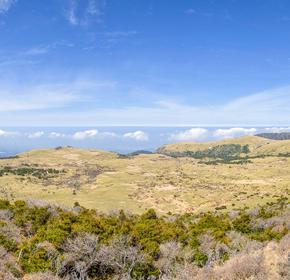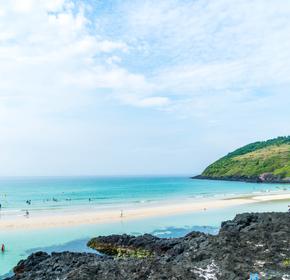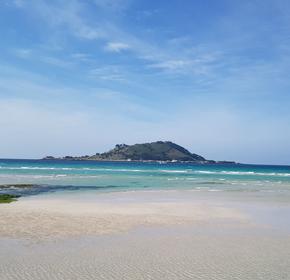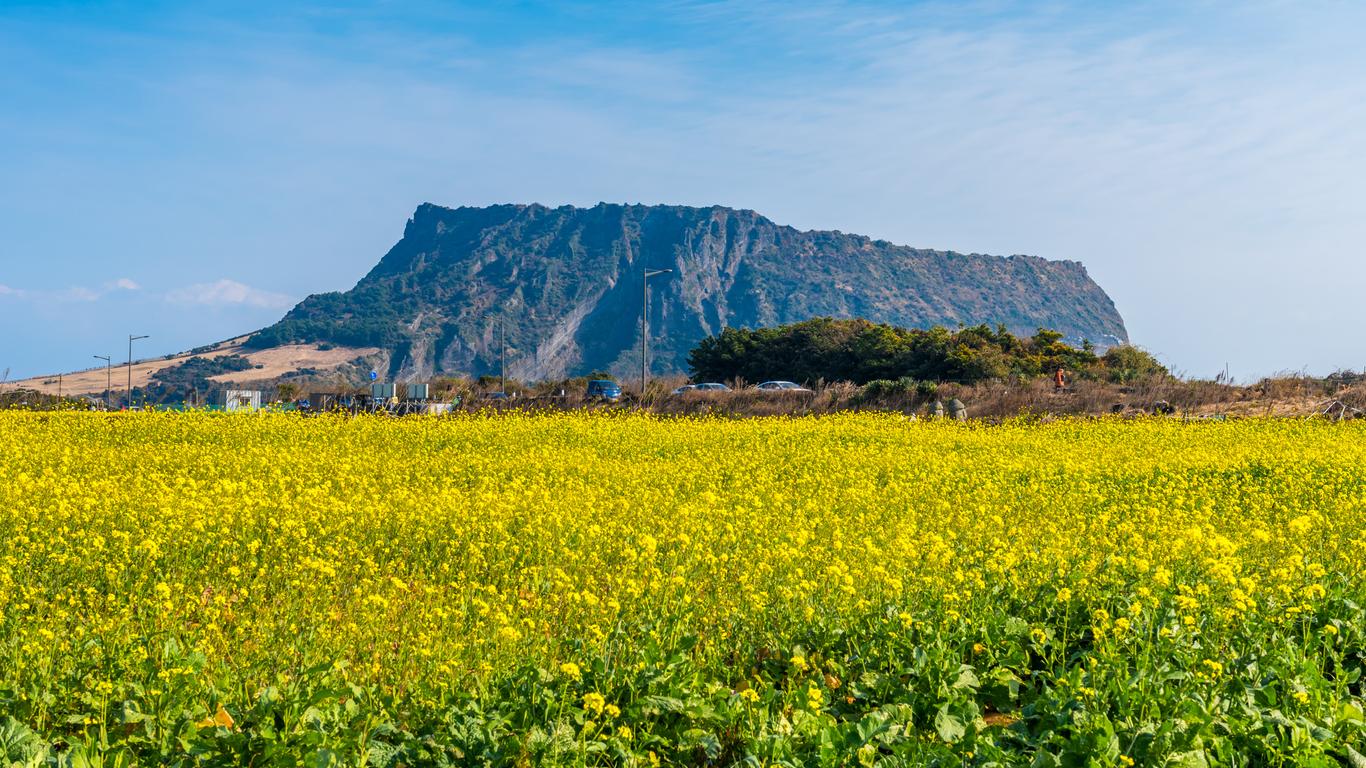
Jeju City travel guide
Jeju City Tourism | Jeju City Guide
You're Going to Love Jeju City
Jeju Island is fast becoming the go-to island destination in South Korea thanks to its breathtaking beaches, scenic cliffs, local delicacies, and welcoming local population. With an area that is three times bigger than Seoul, the country's capital, Jeju Island provides a wide landscape of possibilities for your next vacation adventure.
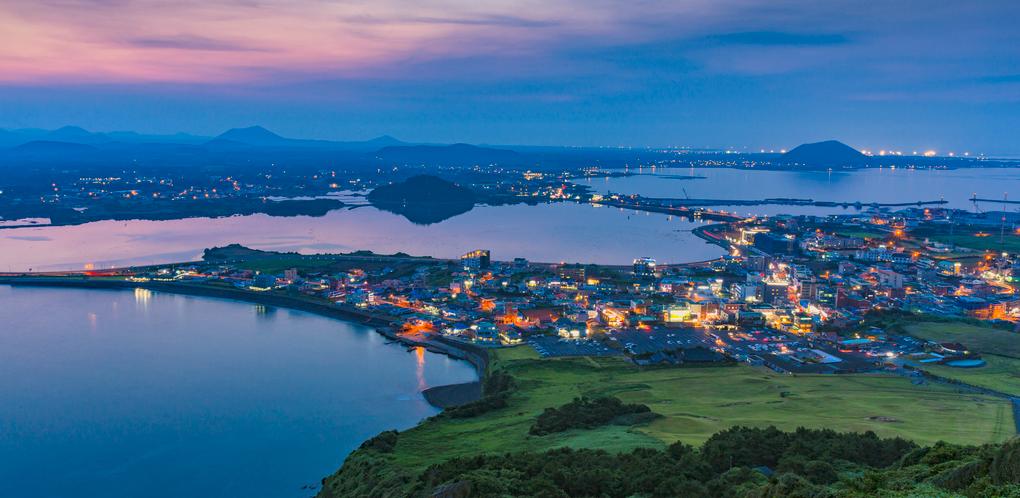
Top 5 Reasons to Visit Jeju City
1. The Beaches
Nicknamed the "Hawaii of Korea", Jeju is popular thanks to its tranquil lush vegetation, crystal clear waters, and stunning white sand beaches. Iho Tewoo Beach is just a short hop from downtown, but the most beautiful beaches can be found near Hallim Park on the north coast of the island. For those looking to extend their beach day, Gwakji Gwamul Beach offers great BBQ facilities and campsites.
2. The Hiking Trails
The Jeju Olle-gil walking trails stretch around the entire island, offering hikes that range from 3-8 hours. Geomun Oreum is another popular UNESCO-designated trail, which takes visitors to nine different dragon peaks that overlook the island's lush landscape. Seongsan Ilchulbong, or sunset peak, is another hike that has gained UNESCO recognition for its cultural, geographical, and historical importance.
3. The Food
Jeju Island residents have taken advantage of their surrounding ocean resources to create some of the most unique and delicious delicacies in all of Korea. Abalone is the most expensive seafood on the island and is caught fresh by local female free drivers called haenyeo. Must-try Jeju dishes include Okdom Gui (grilled sea bream), Haemul Dukbaegi (seafood hotpot), and Jeon-bok-juk (rice porridge with abalone).
4. Museums that Break the Mold
There are many off-the-wall museums on Jeju Island, including the Teddy Bear Museum, Haenyeo Museum, and Trick Eye Museum, an interactive spot with paintings created using a special 3D technique.
5. K-Drama Film Locations
Jeju Island is a popular destination for many K-Drama series that use the quirky cafes and stunning natural scenery to tell some of Asia's most beloved stories. Maps of the film location spots can be found at Jeju International Airport and feature the most well-known sites, including Hamdeok Beach (Lie to Me), Hyatt Regency Hotel (Boys Over Flowers), and Sanmotoonge Café (Coffee Prince).
What to do in Jeju City
1. Hike in Hallasan National Park
The most popular natural attraction by far is the shield volcano Hallasan, which can be seen from any point on Jeju Island. Hallasan also happens to be the highest mountain in Korea, offering five well-trodden trails up to the summit. The name Hallasan comes from the word "Han", which represents the universe, and "la", which means to pull. These words combined give the sense that Hallasan mountain is high enough to pull the universe, solidifying it as a sacred place in local Korean culture.
2. Take in Jeongbang Falls
Located near Seogwipo city, this popular tourist spot is the only waterfall in Asia that falls directly into the ocean. Along the way, it's common to see a group of haenyeo scouring the coastline for seaweed, shellfish, sea cucumber, and abalone. Fun fact: according to ancient lore, a holy dragon is said to have lived under the falls, and its spiritual water can cure diseases and bring rain during drought.
3. Visit Yakcheonsa Temple
This famous Buddhist temple near Mount Hallasan is known as the "medicine stream" temple and was rebuilt in the 1990s. Here, mineral spring water flows from the ground year round, which, according to Buddhist tradition, washes away the suffering and tears of sentient beings. Several guardian dragons stand post outside the main stairway.
4. Splash Around at Hyeop-jae Beach
Swim in the tranquil turquoise waters off of Jeju Island's north coast at Hyeop-jae Beach. Just 1.2 miles from Hallim city, the beach boasts a forested area next to idyllic white sand shores. The beach is just across the street from Hallim Park, which features 16 gardens, 2 lava caves, and a traditional folk village.
5. Peruse Jeju Folk Village Museum
Jeju Folk Village Museum gives visitors a deeper understanding of the rich cultural history and assets of South Korea. Built in an area of 1,614,586 square feet, the village features several lively exhibits demonstrating the daily life and customs of ancient Jeju residents. The museum costs KRW11,000 with an additional KRW2,000 for the accompanying audio guide in English.
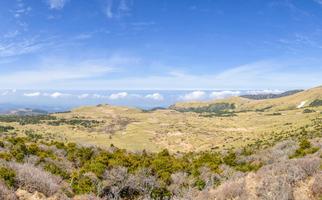

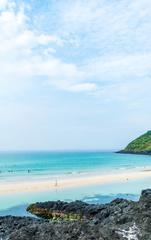
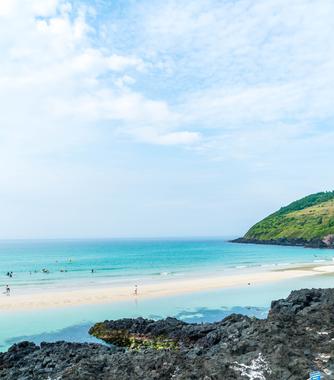
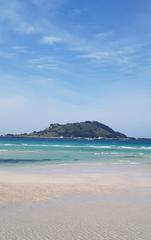
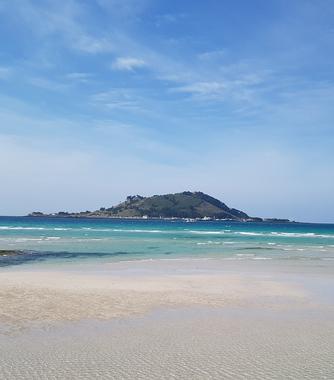
1. Hike in Hallasan National Park
The most popular natural attraction by far is the shield volcano Hallasan, which can be seen from any point on Jeju Island. Hallasan also happens to be the highest mountain in Korea, offering five well-trodden trails up to the summit. The name Hallasan comes from the word "Han", which represents the universe, and "la", which means to pull. These words combined give the sense that Hallasan mountain is high enough to pull the universe, solidifying it as a sacred place in local Korean culture.
2. Take in Jeongbang Falls
Located near Seogwipo city, this popular tourist spot is the only waterfall in Asia that falls directly into the ocean. Along the way, it's common to see a group of haenyeo scouring the coastline for seaweed, shellfish, sea cucumber, and abalone. Fun fact: according to ancient lore, a holy dragon is said to have lived under the falls, and its spiritual water can cure diseases and bring rain during drought.
3. Visit Yakcheonsa Temple
This famous Buddhist temple near Mount Hallasan is known as the "medicine stream" temple and was rebuilt in the 1990s. Here, mineral spring water flows from the ground year round, which, according to Buddhist tradition, washes away the suffering and tears of sentient beings. Several guardian dragons stand post outside the main stairway.
4. Splash Around at Hyeop-jae Beach
Swim in the tranquil turquoise waters off of Jeju Island's north coast at Hyeop-jae Beach. Just 1.2 miles from Hallim city, the beach boasts a forested area next to idyllic white sand shores. The beach is just across the street from Hallim Park, which features 16 gardens, 2 lava caves, and a traditional folk village.
5. Peruse Jeju Folk Village Museum
Jeju Folk Village Museum gives visitors a deeper understanding of the rich cultural history and assets of South Korea. Built in an area of 1,614,586 square feet, the village features several lively exhibits demonstrating the daily life and customs of ancient Jeju residents. The museum costs KRW11,000 with an additional KRW2,000 for the accompanying audio guide in English.






Where to Eat in Jeju City
For a taste of famously authentic black pork, head over to Jeju Hukdon Saesang Suragan before the crowds start piling in after 7 p.m. A meal for two costs around KRW39,000 and can be ordered from English-language menus for convenience. Myeongjin Jeonbok in downtown Jeju features a simple menu with just four options but a robust local crowd following. Make sure to try the fresh-caught abalone from the adjacent waters for around KRW50,000 for two people.
When to visit Jeju City
The best time to visit Jeju is in the spring between April and June, when the country's cherry blossom trees are in fully bloom and the weather is moderate. This time also has the added bonus of being outside of the main summer tourist season, allowing uninterrupted natural views and shorter lines at most main attractions.
How to Get to Jeju City
Plane
Jeju International Airport hosts 27 airlines that fly into Jeju mainly from South Korea's other main transportation hubs in Seoul and Busan. The bus service will run you into town for KRW1,200 or you can take a taxi for around KRW9,000; it's a 30-minute trip.
Boat
Jeju Island has five routes from mainland South Korea that will make the trip in roughly 4 hours, however there is also the option for overnight cabins. Costs for a one-way ferry range between KRW30,000 and KRW75,000.
Airports near Jeju City
Airlines serving Jeju City
Where to stay in Jeju City
Ojori B&B in the eastern rural area of Seongsan features lush green mountain views with complimentary breakfast. Blue Spring Hotel offers more central beach-side accommodation in a luxury high-rise hotel in Hallim. Some of the best areas to stay in in Jeju include Jeju City, which is close to Mount Hallasan, and Jungmun Tourist Resort Complex, home to the Teddy Bear Museum and loads of other attractions.
Where to stay in popular areas of Jeju City
Most booked hotels in Jeju City
How to Get Around Jeju City
Public Transportation
Purchase reloadable T-Money transportation cards for KRW4,000 at almost any convenience store when travelling around Jeju Island. A standard one-way fare will cost KRW1,000-5,000, depending on the distance.
Taxis
Taxi fares start at KRW2,800 and are based on the distance traveled, which on a small island can be very affordable. Hiring a private taxi for a day will cost around KRW100,000.
Car
Hire cars can be picked up at Jeju International Airport or at several convenient locations around the city center from brands including Hertz, Ok Rent a Car, AJ Rent-a-Car, and Sixt. Standard sedan hire cars start at KRW32,000 a day.
The Cost of Living in Jeju City
Shopping
Yeon-Dong Shopping District is a great area filled with boutique shops selling mid- to high-priced quality goods. The area also features a number of cafes, karaoke bars, and art galleries to round out your day of shopping. Lee Joong Seop Art Street in Seogwipo is a popular backdrop for many Korean drama films, featuring local eclectic art and several quirky cafes. For a more authentic shopping experience, visit the Art Street for the flea and craft market on Saturday for some inspiration for start your next project. Souvenirs can cost upwards of KRW20,000.
Supermarkets and Food Stores
Two of the most widespread supermarkets for one-stop shopping on Jeju Island are Lotte Mart and Shilla Duty Free Shop. Here you can find food, beauty, home decor, and other products to meet your needs while travelling. A gallon of milk will set you back about KRW7,000.
